People have been fascinated with the unusual flight and beauty of hummingbirds. Over the years, gardeners have tried various ways to attract these birds to their gardens with various flowering plants, and created a conducive environment for them. This article will tell you how you can do the same.
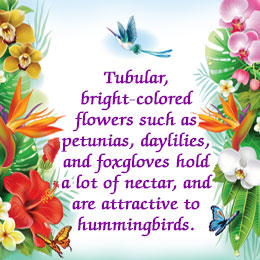
Quick Fact
Hummingbirds need around 10,000 calories of energy every day. To do this, they must consume nectar from thousands of flowers. This means that the chances of hummingbirds visiting your garden is directly proportional to the number of flowers in it.Hummingbirds are the smallest birds that exist on planet Earth, with the largest species growing only up to 3 inches in length. These birds have a beautiful, shiny plumage, that comes in a variety of colors. No other bird species can fly the way a hummingbird can. Their unique body allows them to hover in one spot to feed on nectar from flowers, with a wing speed of 70 - 90 beats every second, and fly in any direction, even backwards. These characteristics are alluring to most gardeners, and creating an environment to attract hummingbirds is easy if you have the appropriate knowledge.
To bring hummingbirds to your garden, you need to make sure that the area has plenty of flowers, safety, water, and places for them to shelter in. Planting flowers that attract hummingbirds does not mean that you have to sacrifice the aesthetics of the landscape. The sheer variety of plants available for this purpose will enable you to create one of the most impressive landscapes in your area. All you need to do is plan the location of each plant strategically, for maximum effect.
Flowers That Attract Hummingbirds
Bee Balm
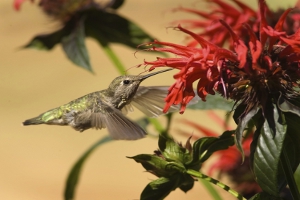 Scientific Name
Scientific Name: Monarda didyma
Native to: North AmericaBottlebrush
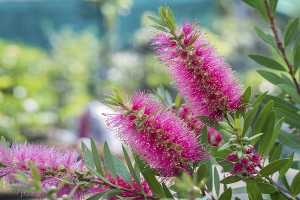 Scientific Name
Scientific Name: Callistemon citrinus
Native to: AustraliaBuddleia
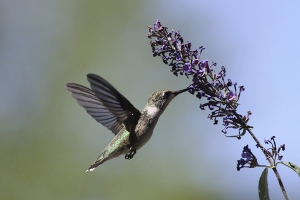 Scientific Name
Scientific Name: Buddleja caryopteridifolia
Native to: America, Asia, and AfricaCatmint
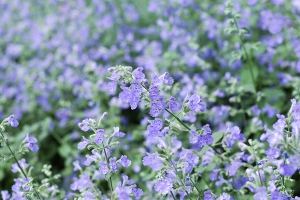 Scientific Name
Scientific Name: Nepeta cataria
Native to: Europe, Asia, and AfricaChinese Lantern
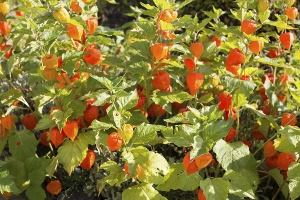 Scientific Name
Scientific Name: Physalis alkekengi
Native to: Europe and South AsiaSpider Flowers
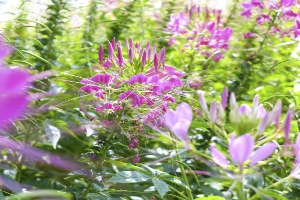 Scientific Name
Scientific Name: Cleome hassleriana
Native to: Argentina, Paraguay, Uruguay, and BrazilColumbines
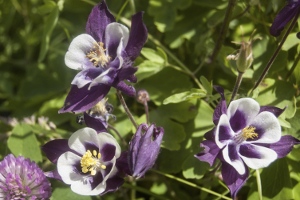 Scientific Name
Scientific Name: Aquilegia vulgaris
Native to: Northern HemisphereDaylilies
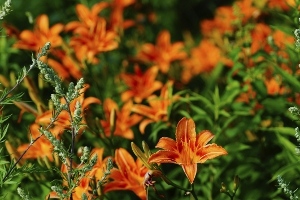 Scientific Name
Scientific Name: Hemerocallis fulva
Native to: China, Japan, and KoreaDelphiniums
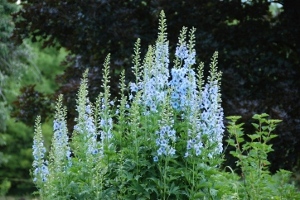 Scientific Name
Scientific Name: Delphinium staphisagria
Native to: Northern Hemisphere and Central AfricaDianthus
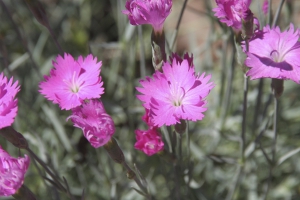 Scientific Name
Scientific Name: Dianthus caryophyllus
Native to: Europe, Asia, and North AfricaFirebush
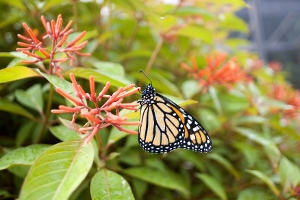 Scientific Name
Scientific Name: Hamelia patens
Native to: North and South AmericaFlowering Maple
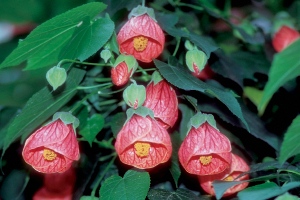 Scientific Name
Scientific Name: Abutilon pictum
Native to: America, Australia, Asia, and AfricaFlowering Tobacco
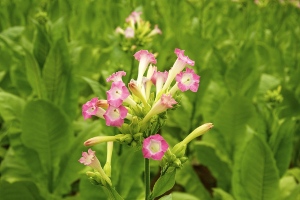 Scientific Name
Scientific Name: Nicotiana alata
Native to: South AmericaFoxglove
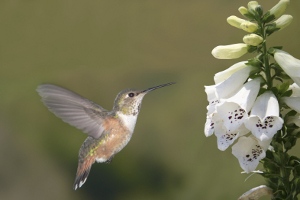 Scientific Name
Scientific Name: Digitalis purpurea
Native to: Europe, Asia and AfricaFuchsia
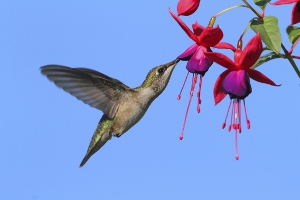 Scientific Name
Scientific Name: Fuchsia magellanica
Native to: New Zealand, South and Central AmericaBellflowers
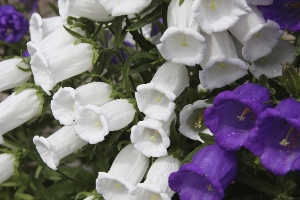 Scientific Name
Scientific Name: Campanula latifolia
Native to: Asia, Africa, and Mediterranean regionHollyhock
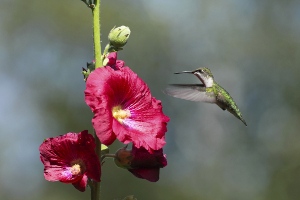 Scientific Name
Scientific Name: Alcea rosea
Native to: Europe and AsiaImpatiens
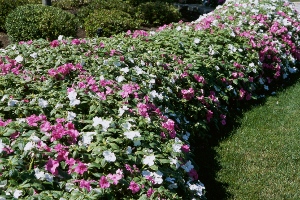 Scientific Name
Scientific Name: Impatiens pseudoviola
Native to: Tropics of the northern hemisphereLantana
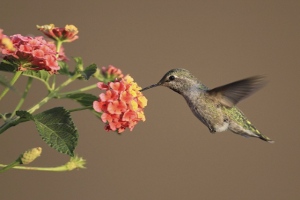 Scientific Name
Scientific Name: Lantana camara
Native to: America, Africa, and AustraliaLupine Flowers
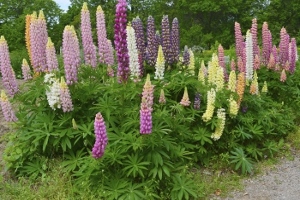 Scientific Name
Scientific Name: Lupinus angustifolius
Native to: Mediterranean and North and South AmericaPenstemon
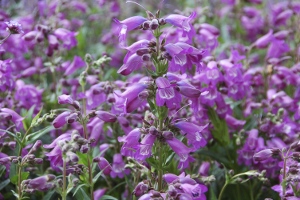 Scientific Name
Scientific Name: Penstemon campanulatus
Native to: North America and east AsiaPhlox Flowers
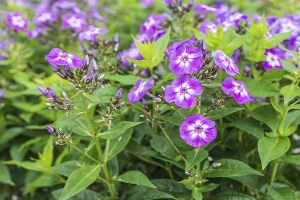 Scientific Name
Scientific Name: Phlox caespitosa
Native to: North AmericaPetunias
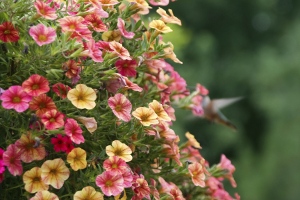 Scientific Name
Scientific Name: Petunia axillaris
Native to: South AmericaPincushion Flowers
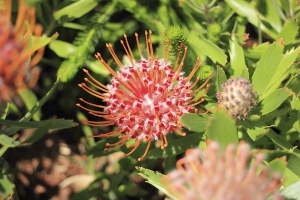 Scientific Name
Scientific Name: Scabiosa columbaria
Native to: Europe and AsiaRhododendrons
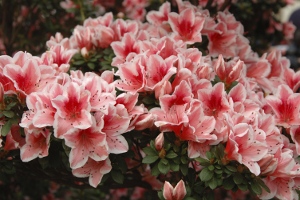 Scientific Name
Scientific Name: Rhododendron simsii
Native to: AsiaRose of Sharon
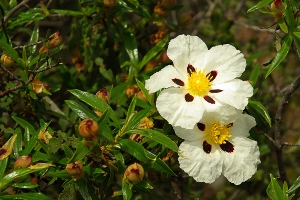 Scientific Name
Scientific Name: Hibiscus syriacus
Native to: AsiaSage
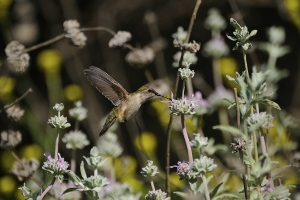 Scientific Name
Scientific Name: Salvia officinalis
Native to: Mediterranean regionScarlet Sage
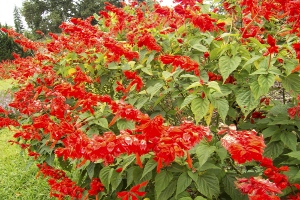 Scientific Name
Scientific Name: Salvia splendens
Native to: BrazilTrumpet Honeysuckle
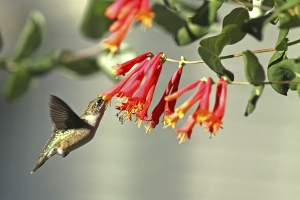 Scientific Name
Scientific Name: Lonicera Sempervirens
Native to: China, Europe, America, and IndiaShrimp Plant
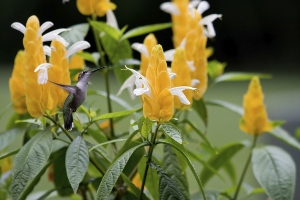 Scientific Name
Scientific Name: Justicia brandegeeana
Native to: Mexico and FloridaTorch Lily
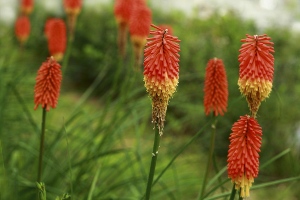 Scientific Name
Scientific Name: Kniphofia uvaria
Native to: South Africa, America, Australia, and EuropeTrumpet Bush
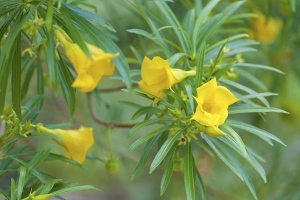 Scientific Name
Scientific Name: Tecoma stans
Native to: North and South AmericaWeigela Flowers
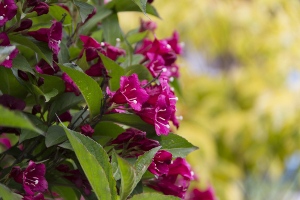 Scientific Name
Scientific Name: Weigela florida
Native to: Eastern AsiaFlag Iris
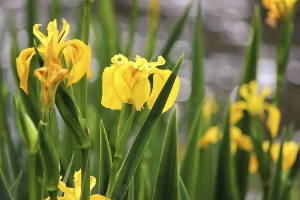 Scientific Name
Scientific Name: Iris pseudacorus
Native to: Northwest Africa, Europe, and western Asia
Tips to Make Your Garden Hummingbird-friendly
- Along with the flowering plants, use some trees, shrubs, climbing vines, and herbs to create a garden with various height variables.
- Opt for flowers with bright colors, because hummingbirds locate their food by sight, rather than smell.
- Make arrangements for a sprinkler or fountain, because hummingbirds love to bathe in the spray.
- Grow the plants with some space between them, to facilitate easy movement for these birds.
- Orange and red are a hummingbird's favorite colors. Grow your plants accordingly.
- Plant a few dense shrubs which can be used by the birds as shelter.
- Avoid the use of chemical pesticides, to keep the birds from getting sick.
- Grow plants that flower one after the other. This will ensure that the hummingbirds will visit your garden throughout the year.
- Strew some lint in your garden. Hummingbirds use it in their nests.
These were the best flowers to attract hummingbirds. Creating a hummingbird-friendly garden will also attract many butterflies that are nearby, making the experience doubly enjoyable. So, now that you know what flowers hummingbirds like, go ahead, be creative, and create a space that will definitely bring a smile to your face.






 Quick Fact
Quick Fact Scientific Name: Monarda didyma
Scientific Name: Monarda didyma Scientific Name: Callistemon citrinus
Scientific Name: Callistemon citrinus Scientific Name: Buddleja caryopteridifolia
Scientific Name: Buddleja caryopteridifolia Scientific Name: Nepeta cataria
Scientific Name: Nepeta cataria Scientific Name: Physalis alkekengi
Scientific Name: Physalis alkekengi Scientific Name: Cleome hassleriana
Scientific Name: Cleome hassleriana Scientific Name: Aquilegia vulgaris
Scientific Name: Aquilegia vulgaris Scientific Name: Hemerocallis fulva
Scientific Name: Hemerocallis fulva Scientific Name: Delphinium staphisagria
Scientific Name: Delphinium staphisagria Scientific Name: Dianthus caryophyllus
Scientific Name: Dianthus caryophyllus Scientific Name: Hamelia patens
Scientific Name: Hamelia patens Scientific Name: Abutilon pictum
Scientific Name: Abutilon pictum Scientific Name: Nicotiana alata
Scientific Name: Nicotiana alata Scientific Name: Digitalis purpurea
Scientific Name: Digitalis purpurea Scientific Name: Fuchsia magellanica
Scientific Name: Fuchsia magellanica Scientific Name: Campanula latifolia
Scientific Name: Campanula latifolia Scientific Name: Alcea rosea
Scientific Name: Alcea rosea Scientific Name: Impatiens pseudoviola
Scientific Name: Impatiens pseudoviola Scientific Name: Lantana camara
Scientific Name: Lantana camara Scientific Name: Lupinus angustifolius
Scientific Name: Lupinus angustifolius Scientific Name: Penstemon campanulatus
Scientific Name: Penstemon campanulatus Scientific Name: Phlox caespitosa
Scientific Name: Phlox caespitosa Scientific Name: Petunia axillaris
Scientific Name: Petunia axillaris Scientific Name: Scabiosa columbaria
Scientific Name: Scabiosa columbaria Scientific Name: Rhododendron simsii
Scientific Name: Rhododendron simsii Scientific Name: Hibiscus syriacus
Scientific Name: Hibiscus syriacus Scientific Name: Salvia officinalis
Scientific Name: Salvia officinalis Scientific Name: Salvia splendens
Scientific Name: Salvia splendens Scientific Name: Lonicera Sempervirens
Scientific Name: Lonicera Sempervirens Scientific Name: Justicia brandegeeana
Scientific Name: Justicia brandegeeana Scientific Name: Kniphofia uvaria
Scientific Name: Kniphofia uvaria Scientific Name: Tecoma stans
Scientific Name: Tecoma stans Scientific Name: Weigela florida
Scientific Name: Weigela florida Scientific Name: Iris pseudacorus
Scientific Name: Iris pseudacorus